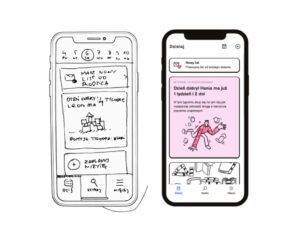Let’s say you’ve completed your market analysis. You need to identify a niche and develop a product that fulfills the community’s needs. The question of the token sale strategy and the token distribution comes naturally. Unfortunately, many entrepreneurs make mistakes that can lead the project to failure, or jeopardize the interest of the community built around it.
In this article, I will cover the most common mistakes made in the industry regarding token sale strategy, especially the token airdrop and the token bounty program. I’ll provide information that can make your ICO a success.
Token sale strategy – it’s all about bonuses
I read a lot of white papers. Why? Because I want to stay constantly updated on the new technologies that can be implemented in the ecosystem of our clients’ projects. Some of them are very well written and technical, others confuse basic concepts.
Token economics describe the ecosystem of your project, its functionalities and the flow of the token inside the Decentralised Application. Token economics IS NOT the description of the different token sale phases. These are two different things. It’s important to keep that in mind.
In order to incentivize the potential token holders to purchase the tokens as early as possible, some teams allocate important bonuses to the early-birds (up to 80% during the private sale, and 30% during the pre-ICO).
Divergence of interests
As a consequence, the creates a divergence of interests between the token holders of different phases. Early-birds are tempted to sell their token as soon as they are tradeable, given the fact that they already have a profit up to 80%, as opposed to token holders that purchased their tokens directly on the secondary market.
This can lead to dramatic consequences. Early-birds will not be part of the project anymore and the token holders that purchased their tokens on the secondary market will lose an important part of their investment. The order book will be full of sell orders (early-birds token holders), compared to the potential buyers. As a consequence, the value of the token will simply drop, illustrating basic supply and demand.
This is why it is very important to design the token sale strategy carefully. Never try to exceed the 30 to 40% bonus for your first token holders. Ideally, try to identify them. Talk to them. Identify their vision on the project, and elaborate a strategy that will fit with the interest of the community rather than the interest of a few of them.
Token distribution, token airdrop, and brand awareness: false friends
Airdrops are a free distribution of tokens to a large number of wallet addresses in exchange for the completion of tasks. People who accomplish those tasks are called bounty hunters. Most of the time, bounty hunters have to promote (follow & like) the project on social networks (Facebook, Twitter, Reddit, etc), write favorable reviews of the project on Youtube and Medium or translate white papers and other documents. To summarize, bounty hunters are there to contribute to the creation of the brand awareness of the project.
At the beginning of this article, I wrote about the divergence of interest. The token airdrop is the perfect second example that illustrates this phenomenon for three main reasons.
Divergence of interests and token bounty program problems
1) Let’s take three categories of potential holders: 1) The traders, 2) the users and 3) the bounty hunters. They all have differing interests. Traders hope to see the value of the token increase, users expect to have a stable value to use their token on the platform. And token bounty program hunters hope to have a decent value to at the end selling all their stake at the same moment.
2) The industry has changed, and its community as well. If a token bounty program helped some major coin to be known (e.g. Tron), times have changed. The community that is made of bounty hunters is full of toxic users (bot, scammers, opportunists) that care only about one thing: what will be the value of the token when received, and when can it be dropped on the exchanges.
3) The aim of a token airdrop, more than the brand awareness, is to increase the liquidity of the coin. This is an important factor if you want to get listed on some exchanges. Teams members expect that a large number of users will hold their coin and will exchange it, increasing the liquidity. What happens, in reality, is that the bounty hunters will tend to sell their tokens directly after receiving it. As a consequence, the order book is saturated with selling orders, and lack of buying orders.
As a consequence, the marketing value offered by the bounty hunters is incredibly small. Why? Because of the quality of their contribution in the marketing campaign (most of the time following a Twitter account and joining a Telegram group). The contribution of these new members acquired with the money results in two words; “when binance?”.
Can a token airdrop or bounty program work?
However, some teams are considering this slightly fake community acquired by a token bounty program as essential for their development, and we respect that. A token airdrop, done smartly, can be an added value to a project. If it is the case, always keep in mind three important factors:
1) Marketing cost. Doing an airdrop is costly marketing wise and takes a huge chunk of the marketing budget. The major token airdrop groups are asking high prices to promote airdrops on their Telegram groups (up to 800$ per group).
2) Distribution cost. The distribution of the tokens to the token holders that have participated in the token bounty program can represent an important cost. Indeed, every transfer of tokens requires GAS to be performed. When the Ethereum Main Network is saturated, the cost of distribution for 70 000 users can go up to 30 000USD. Take this into consideration to determine your targeted users amount.
3) Balanced distribution. Determine strategically the number of tokens that you will give away freely to your users, compared to the total token supply. Giving away a huge quantity of tokens at once will make the price of the token drop. Don’t hesitate to do two rounds of airdrops if necessary.
Conclusion
Defining a good token sale and distribution can be challenging. I personally organized a massive token airdrop that gathered 30 000 users. So these things can work – but might be hard to do on your own. For questions or comments, contact me via the box below.
Here are more resources to get you started with your ICO:
https://espeoblockchain.com/blog/how-start-an-ethereum-ico/
https://espeoblockchain.com/blog/smart-contract-ico-token-questions/




